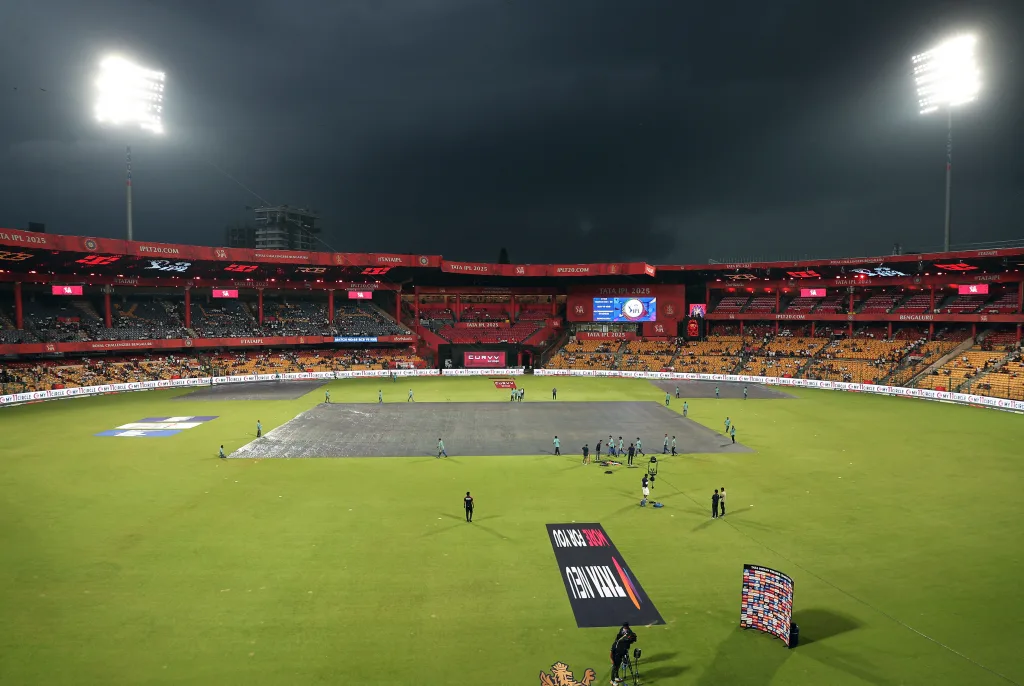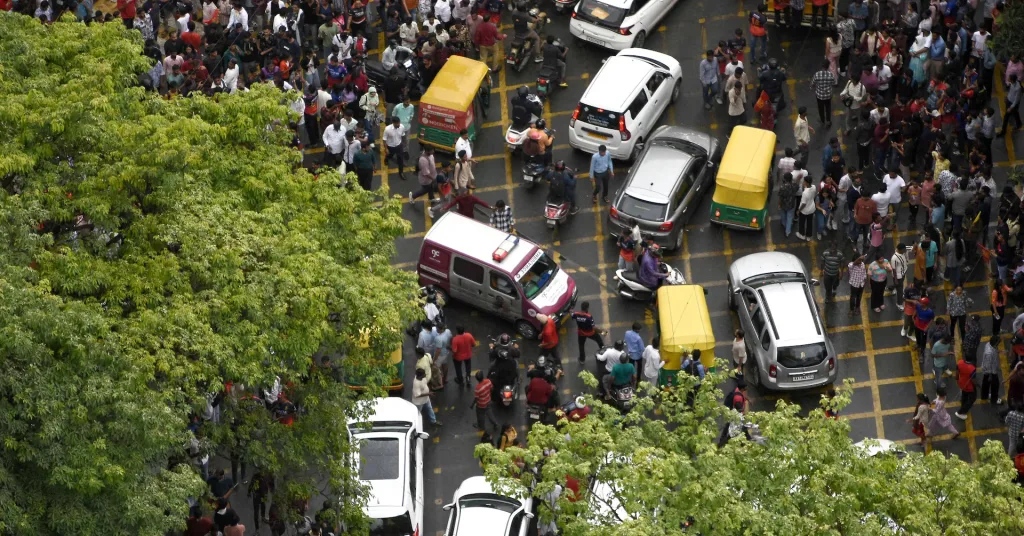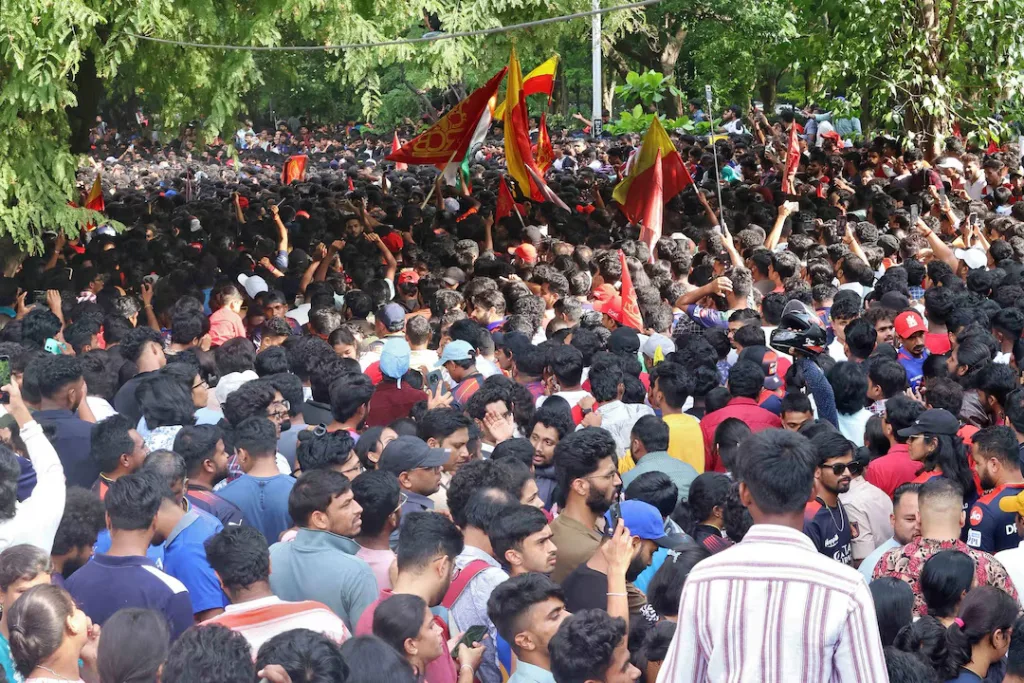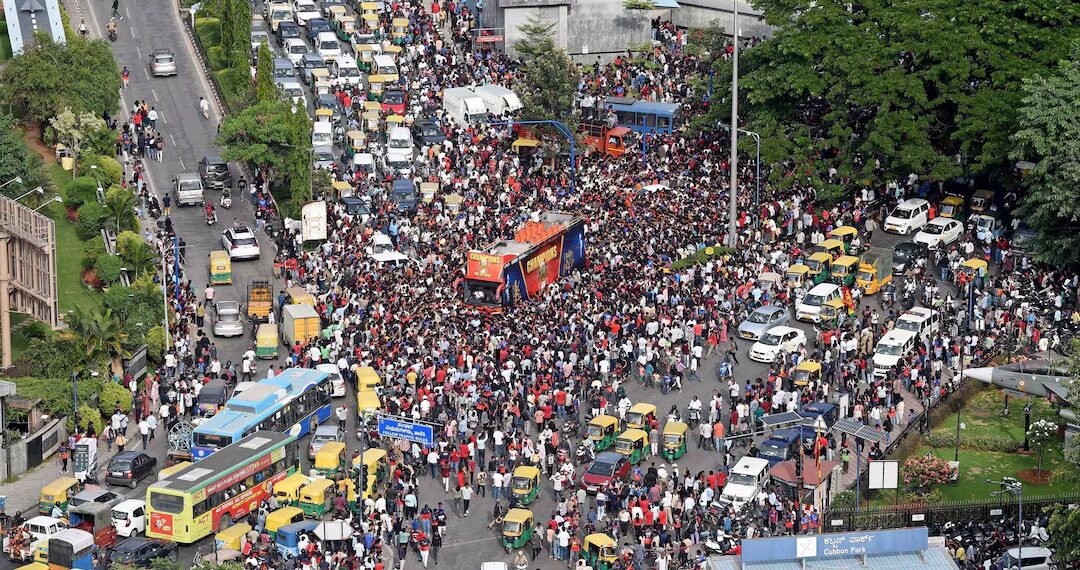The iconic M Chinnaswamy Stadium, Bengaluru’s cricket fortress and RCB’s beloved home ground, faces an unprecedented crisis that threatens to reshape Indian cricket’s landscape. Following a comprehensive safety investigation triggered by a tragic stampede, the venue now stands at the center of a controversy that could impact both the upcoming Women’s World Cup and IPL 2026 seasons.
Table of Contents
The Devastating Verdict: Stadium Declared Unsafe
In its report, the commission stated that the stadium’s “design and structure” are inherently “unsuitable and unsafe” for mass gatherings, delivering a crushing blow to cricket fans and stakeholders alike. The Justice Michael D’Cunha Commission, established to investigate the June 4 stampede tragedy, has recommended against hosting large-scale events at the historic venue.

This decision stems from the horrific incident during RCB’s IPL victory celebrations, where 11 people died in a stampede outside the stadium. The Chinnaswamy Stadium, which has a seating capacity of less than 40,000, was overpowered by a crowd of more than 250,000, exposing critical safety vulnerabilities.
The Ripple Effect: RCB and BCCI in Crisis Mode
Immediate Impact on RCB
The timing couldn’t be worse for Royal Challengers Bengaluru (RCB). Fresh from their first-ever IPL title victory, the franchise now faces the prospect of being homeless for the IPL 2026 season. RCB will not be able to play at its home ground in the upcoming season, with the M. Chinnaswamy Stadium likely banned from IPL 2026.
This development presents numerous challenges:
- Fan Displacement: RCB boasts one of cricket’s most passionate fanbases, with the Chinnaswamy atmosphere being legendary
- Commercial Impact: Home matches generate significant revenue through ticket sales, hospitality, and local partnerships
- Logistical Nightmare: Finding alternative venues with adequate capacity and infrastructure
- Cultural Loss: The stadium represents decades of RCB history and emotional connection
BCCI’s Mounting Challenges
The Board of Control for Cricket in India (BCCI) faces a complex situation with multiple high-profile tournaments on the horizon:
Women’s World Cup 2025 Concerns The 13th edition of the Women’s 50-over World Cup will run from September 30 until November 2, with M. Chinnaswamy Stadium (Bengaluru) listed among the five venues. The safety concerns now cast doubt on Bengaluru’s role in this prestigious tournament.
IPL 2026 Venue Crisis With IPL being cricket’s most valuable property, losing one of its premium venues creates significant operational and commercial challenges for the BCCI.
Understanding the Safety Crisis
The June 4 Tragedy
The stampede occurred during what should have been a celebration of RCB’s historic IPL triumph. Key factors that led to the disaster include:
- Crowd Mismanagement: An estimated 2-3 lakh people had gathered outside the Chinnaswamy stadium with security being “inadequate and ineffective”
- Poor Planning: The state government’s report highlighted inadequate preparation by event organizers
- Infrastructure Limitations: The stadium’s design proved insufficient for handling massive crowds
The Investigation Process
The state government launched a multi-tier investigation, including an internal probe by the Deputy Commissioner, a criminal inquiry by the Criminal Investigation Department (CID), and most crucially, an independent investigation led by Justice Michael D’Cunha.

Additional Safety Concerns
The problems at M Chinnaswamy Stadium extend beyond the stampede investigation. The stadium failed to renew or secure fire safety clearance, triggering action from the Karnataka Fire and Emergency Services Department, with the Director General of Police recommending power disconnection.
Stakeholder Accountability
The investigation has identified multiple parties responsible for the tragedy:
Organizations Under Scrutiny
- RCB: Event organizers and primary stakeholders
- KSCA (Karnataka State Cricket Association): Stadium operators
- Local Police: Security arrangements
- DNA Entertainment Networks: Event management
Karnataka Cabinet has accepted Justice D’Cunha’s report and plans to take legal action against RCB, KSCA and other stakeholders.
Financial and Commercial Implications
| Stakeholder | Potential Impact | Financial Loss |
|---|---|---|
| RCB | Loss of home advantage, reduced ticket revenue | ₹50-100 crores annually |
| BCCI | Venue replacement costs, logistical expenses | ₹25-50 crores |
| Local Economy | Reduced tourism, hospitality losses | ₹200-300 crores per season |
| Sponsors | Reduced visibility, marketing adjustments | ₹30-60 crores |
Path Forward: Potential Solutions
Short-term Alternatives for RCB
| Venue | Capacity | Distance from Bengaluru | Feasibility |
|---|---|---|---|
| Sharjah Cricket Stadium | 27,000 | International | High |
| Hyderabad (Rajiv Gandhi Intl Cricket Stadium) | 55,000 | 560 km | Medium |
| Chennai (MA Chidambaram Stadium) | 50,000 | 350 km | Medium |
| Dharamshala (HPCA Stadium) | 23,000 | 1,850 km | Low |
Long-term Stadium Rehabilitation
The path to restoration involves:
- Infrastructure Overhaul: Complete redesign of crowd management systems
- Safety Upgrades: Enhanced emergency exits, crowd control barriers
- Technology Integration: Advanced crowd monitoring systems
- Regulatory Compliance: Meeting all fire safety and security requirements
Impact on Indian Cricket Landscape
The M Chinnaswamy Stadium situation reflects broader challenges in Indian cricket infrastructure:
Stadium Safety Standards
This incident has prompted a nationwide review of stadium safety protocols, potentially affecting other venues across the country.
Event Management Protocols
The tragedy has highlighted the need for stricter guidelines for organizing large-scale cricket events.
Fan Safety Prioritization
The crisis emphasizes the importance of putting fan safety above commercial considerations.
International Repercussions
The situation could impact India’s reputation as a reliable host for international cricket events:
- ICC Confidence: Questions about India’s ability to safely host major tournaments
- Future Hosting Rights: Potential impact on bids for future global events
- International Media Scrutiny: Negative coverage affecting Indian cricket’s global image
The Road to Recovery
Immediate Actions Required
- Comprehensive Safety Audit: Independent assessment of all stadium systems
- Infrastructure Investment: Significant funding for safety upgrades
- Protocol Development: New crowd management and emergency response procedures
- Staff Training: Enhanced security and emergency response training
Timeline for Restoration
Industry experts suggest that bringing M Chinnaswamy Stadium back to international standards could take:
- Minimum Duration: 18-24 months
- Investment Required: ₹150-200 crores
- Regulatory Approvals: 6-12 months post-renovation
Lessons for Cricket Administration
This crisis offers valuable lessons for cricket administrators globally:
- Safety First: No commercial consideration should compromise fan safety
- Proactive Planning: Anticipating and preparing for worst-case scenarios
- Regular Audits: Continuous assessment of venue safety standards
- Stakeholder Coordination: Better communication between all parties involved
The M Chinnaswamy Stadium crisis represents a watershed moment for Indian cricket. While the immediate focus remains on finding alternative venues for RCB and ensuring the Women’s World Cup proceeds smoothly, the long-term implications extend far beyond cricket. This tragedy has exposed systemic issues in event management and stadium safety that require comprehensive reform.

The path forward demands unprecedented cooperation between the BCCI, state authorities, and cricket franchises to ensure such incidents never recur. Only through genuine commitment to safety reforms can the M Chinnaswamy Stadium reclaim its position as one of cricket’s most cherished venues.
As Indian cricket navigates this challenging period, the priority must remain clear: no victory celebration or commercial success is worth risking human lives. The lessons learned from this crisis will undoubtedly shape the future of cricket venue management across the nation.
FAQs
Why was M Chinnaswamy Stadium declared unfit for major events?
The stadium was declared unsafe following a comprehensive investigation into the June 4 stampede that killed 11 people. The Justice D’Cunha Commission found the stadium’s design and structure inherently unsuitable for mass gatherings.
Will RCB be able to play at Chinnaswamy Stadium in IPL 2026?
Currently, RCB will not be able to play home matches at M Chinnaswamy Stadium in IPL 2026 due to the safety concerns raised by the investigation panel.
How will this affect the Women’s World Cup 2025?
The Women’s World Cup scheduled for September-November 2025 originally included Chinnaswamy Stadium as one of five venues. The BCCI may need to find alternative arrangements for matches planned in Bengaluru.
What caused the June 4 stampede at Chinnaswamy Stadium?
The stampede occurred during RCB’s victory celebrations when an estimated 2-3 lakh people gathered outside the 40,000-capacity stadium. Poor crowd management, inadequate security, and infrastructure limitations contributed to the tragedy.
When might M Chinnaswamy Stadium reopen for major events?
Stadium restoration could take 18-24 months with an investment of ₹150-200 crores, followed by regulatory approvals. The earliest possible reopening for major events would likely be 2027-2028, subject to safety compliance.








